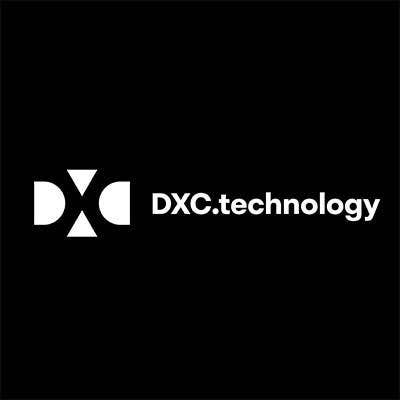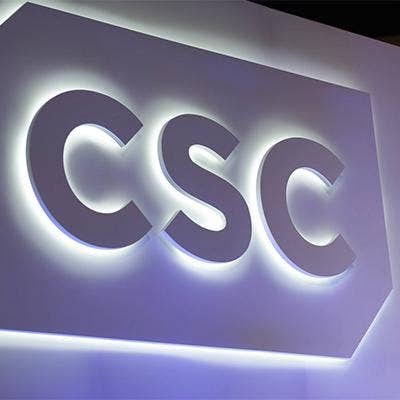DXC Technology CEO Mike Lawrie: We Want To Be An Industry Leader

Lawrie: "We've Got A Long Way To Go."
About 11 months after the merger of CSC and the Enterprise Services Group of Hewlett Packard Enterprise was announced, the new entity – DXC Technology – will debut on Monday.
In a presentation to investors and analysts this week, company executives have forecast a first-year revenue target of $24 billion to $24.5 billion, and a three-year annual revenue growth goal of 1 to 4 percent. The company will focus heavily on digital transformations, fortified by a client roster of about 6,000, including more than 40 percent of the Fortune 500.
Responding to questions at the end of this week's presentation to investors and analysts, Lawrie said CSC has "come a long way in five years; we've got a long way to go."
Click through to read what else Lawrie said. The questions and answers have been edited for clarity and brevity.

Why Is CSC Changing Its Name To DXC?
We rebranded this for a lot of different reasons. One, both brands were sort of tired, but more importantly, we're signaling that this is about the future. This isn’t about just cost takeout. This is about building a leadership position in the industry, not a "me too" position. CSC was "me too" for a lot of years, and even HPE-ES, within the HP construct, was a captive channel distribution for technology.
This is about something entirely new. And this is one of the biggest cultural shifts that we have to make in the company … to start thinking as a leader, not an excuse for leadership. And that’s a subtle but important shift, and [DXC's]s capital allocation model supports that way of thinking and leading as we go forward.

How Confident Are You In DXC's Services Strategy?
The services industry is fundamentally changing. I've been in this industry 20 years. I was with IBM when we created [its] outsourcing business, and … services was a linear function. For every additional output, you had to put almost the same input in it. I can't stress this enough: Services is going to be delivered on a much different basis, and it is much more of an exponential curve, not a linear curve.
I don’t know how that’s going to play out over 10 years. We have determined enough through our ticketing processes and the industrialization and the digitization of some of our … simple processes that undergird the services business. This isn’t graduate-level work. This is junior high school kind of work. We know we can get x amount of productivity improvement out of [DXC's] installed base. This is why we are really comfortable with the merger because we have worked really hard at CSC [to change] the mix of our business.
It wasn’t our intention to go pick up another large installed base of traditional stuff. However, what we began to realize is … this scale now can be an asset … rather than a liability. That change in thinking has evolved over the last five years. And we're really getting comfortable now that with the digitization of these processes, we can transform and then use that as leverage.

What Has Happened Over The Last Five Years With CSC? How Do You See Things Changing?
I stood in this room five years ago and said we were going to cross sell. We didn’t, because we had nothing to cross sell! So now, we have the offerings, but more importantly, we have the tools to go into a [customer] and say "Look, I can help you fund your transformation program." We couldn’t do that before. Now we can, because we know we can drive the efficiencies. Some of that we're going to keep, and some of it we're going to return to our clients so they can reinvest.
That's different [from] where we are today versus where we were five years ago. And I think five years from now this will have accelerated and so we'll see more of this, not less of it.
That’s the fundamental paradigm shift and why I think a lot of the players that have built their whole business model around labor arbitrage will potentially have a different set of strategic implications that they [will] have to address.

How Will Pricing Impact DXC's Three-Year Financial Targets?
I think within the traditional business, we're going to continue to see the pricing pressures that we've seen for the last 10 years. I don’t see that changing at all. What we are beginning to see, though, is more outcome-based or value-based pricing, particularly around some of these digital platforms …
We're going to be launching a major effort about how we contract because contracting is going to be different with these digital offerings than they have been with many of the traditional services offerings. And as we begin to rethink our contracting and how we do that, there will be an opportunity for different pricing algorithms and different ways of thinking about pricing.
But in terms of our assumptions in this model, our assumption is that pricing will pretty much [remain] where it has been in the last three or four years.

What Has Been Done About Improving How The Company Manages Revenue?
What the primary revenue leakage over the last three or four years at CSC was all about has been about getting out of … troubled contracts. And to get out of the contracts, we had to give work and give projects back to the clients. And we did that purposely so that we could improve the profitability of those contracts. That was a huge leakage.
The other major leakage was the normal runoff and pricedowns that you have associated with those contracts …. In terms of revenue leakage, we have that contained within the model we talked about here …
But the revenue leakage had absolutely nothing to do with de-layering the organization. The only thing that did was lower our costs and improve our responsiveness. So, rather than go through 14 layers of buffers and interpretation and analysis at the end of the day means absolutely nothing.
I think we're going to be running the new company with seven layers of management.

What Are DXC's M&A Plans?
We're not planning to do anything major right now … We'd like to get [the launch of DXC] operationalized and … move around the track a little bit and make sure we know what we're doing. I would think we'll do tuck-in acquisitions very similar to [what CSC did over] the last three or four years.
It'll be either in those digital areas or to continue to fill out our intellectual property in some of our industry-dominated businesses. What happens to the industry longer term? I don’t know. My guess is there will be more consolidation. This is the first big consolidation move. I think there will be more. I think what we want to do is continue to be very disciplined around our capital structure. We'd like to get our revenue back to a more stabilized position. We think that will drive an expansion of the [price to earnings] multiple, which will then … perhaps give us a currency that we can use to do other things with.

How Is DXC's Future Labor Mix Changing As It Takes On More Digital-Related Work?
We're … most likely going to be building a low-cost delivery center in the United States. We pioneered this about three years ago when we built out Bossier City [in Louisiana], and we're really pleased with Bossier City and that’s continued to expand and grow. … We're doing the analysis now; I think we're down to three states that we're looking at and beginning the negotiation process.
So, point one is we're actually going to invest in a low-cost center in the United States, where we're going to use to leverage our business going forward. [CSC's facility in] Pontiac, Michigan, is going to be one of our low-cost centers for a lot of our shared services. It's not all moving this from the U.S. to someplace else. … Only roughly $50 million of that is tied to moving resources out of the country. And we're doing that for a lot of different reasons. There's some political sensitivity to that, but more importantly, it's just good business and we do not have the turnover rates in some of our low-cost centers in the United States that we have in India, [which] runs at a 16 to 18 percent attrition rate and Bossier City, for example, runs at 2 percent. And you factor in the training costs particularly around this digital profile: you have to factor in those training costs and that begins to narrow the differential.
A lot of the digital delivery skills will be sourced in geographies all around the world … so that increase in digital skills will come as we substitute more traditional labor for some of these new digital skills, and that will occur on a global basis.

What's Your Outlook For Public-Sector Technology Spending?
We're expecting the U.S. public sector business to grow a little bit as we go forward. A lot of that will be tied into what happens in Washington, and if you have any insight into that, I'd love to hear it, because I don’t.
I have no idea exactly what the [federal] budget is going to look like [when] it ultimately gets approved by the government. But the general feeling is there will be more expenditure in the U.S. public sector than there has been over the last three or four years. We do think sequestration (automatic budget cuts) is finally going to be behind us, so, we see that business as growing [in the] low single digits.